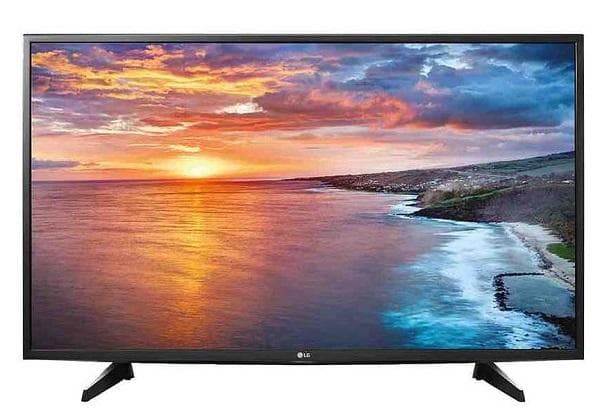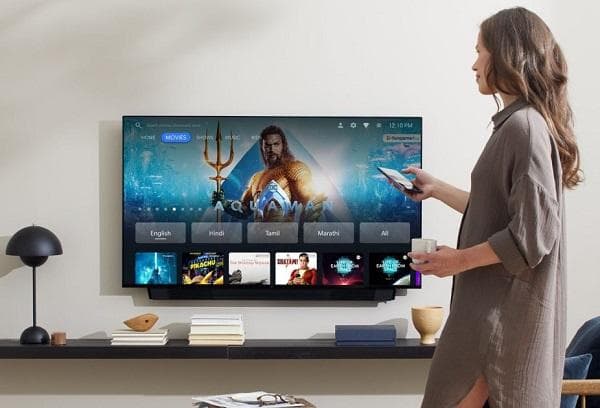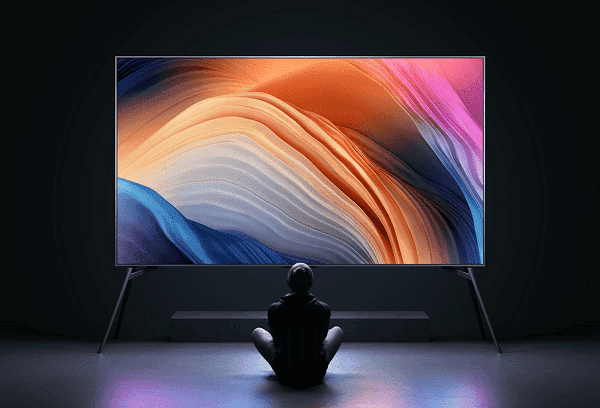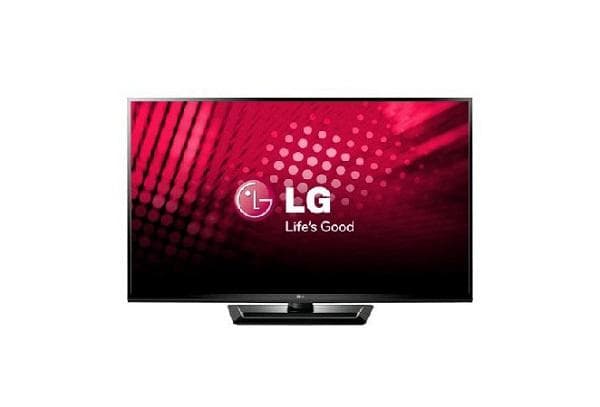Which TV is better than LG or Xiaomi - choose the best in terms of functionality, sound quality, image quality and price
TVs from the South Korean brand LG have long proven their worth in the global market. And yet, competition has not been canceled, so the question of which TV is better than LG or Xiaomi is increasingly being asked by potential buyers. The Chinese are slowly but surely beginning to step on the leader’s heels.
Xiaomi TVs
Xiaomi Corporation released its first TV to the market only in 2013. From the very beginning, it positioned its products as “high quality at an affordable price.” Cost is the main advantage of the Chinese manufacturer. If desired, you can find a model equipped with a 4K matrix, excellent sound, and advanced functionality. Moreover, the price of such a TV will be at least 1.5-2 times lower than that of its main competitors.
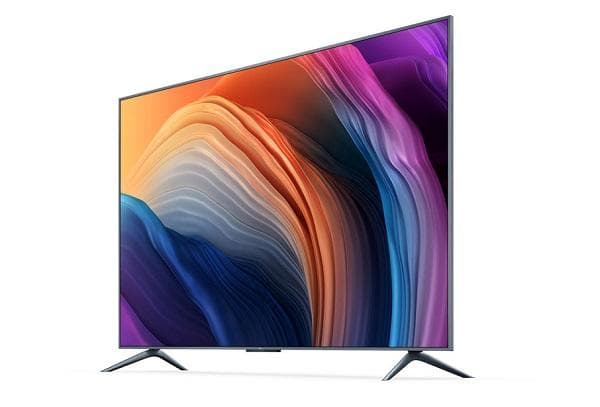
Xiaomi's calling card is its minimalistic design. Thanks to this, Chinese TVs easily fit into any interior. Another advantage of Xiaomi technology is the build quality. Their production uses polycarbonate, light metals and composite alloys.
TV displays have a high level of contrast. The graphics chipset guarantees high image quality. Most models come with an ergonomic remote control. The most modern TVs are equipped with voice control, built-in Wi-Fi and Smart TV.Android is used as an operating system, clear and loud sound is a merit of Dolby Digital technology.
LG TVs
One of the main competitive advantages of the South Korean company is its huge range. New models attract buyers with an expanded color gamut of images, larger screen diagonals and an extended dynamic range function.
TVs from LG have some of the most functionality on the market today. The latest TV models are equipped with Alpha9, a second-generation processor that is capable of recognizing content. The built-in sensor detects the lighting level in the room and adapts the image based on these parameters. Dynamic tone mapping (DTR) is responsible for contrast.
The HFR function allows you to reproduce images in 4K format, and eARC (enhanced audio return channel) is responsible for the audio quality.
This is interesting! LG TVs were the first in the world to support the HDR format.
The company's line includes both affordable and designer models that can be used as an interior element. The presence of multiple outputs allows you to connect any devices and external media to LG TVs.
What is the difference?
LG and Xiaomi TVs differ not only in price. The difference between the products of the two corporations will be most clearly displayed in a table in which the comparison will take place according to a number of basic parameters.
| Criterion | LG | Xiaomi |
| Design | Flat, thin frame, black and silver color | Flat, thin frame, black color |
| Image quality | 4K format, good contrast, viewing angle over 170°, Nanocell technology and Motion Pro function | 4K format, good contrast, viewing angle more than 170°, no glare in the daytime |
| Permission | 384x216 pixels | 384x216 pixels |
| Screen (% of front panel) | 90,66% | 91,86% |
| Sound | Ultra Surround, eARC option | Dolby Digital option, 2 speakers 10 W each, deep bass |
| Smart function | Slightly outdated version of the application | More modern version |
| operating system | Web OS, IPS matrix | Web OS 5.0. |
| CPU | 4 cores | 4 cores |
| WiFi | Eat | Eat |
| Additional functions | Parental control function, karaoke | Remote control with voice control, Smart Home system |
| Supported Formats | HDR 10 Pro, HLG Pro | HDR 10 and HLG |
| Energy consumption | 121 kWh | 160 kWh |
| Ports | 2 USB 2.0 series, HDMI 2.0, composite AV inputs, CI+1.4, S/PDIF | USB 2.0, HDMI 2.0, Antenna (RF), AV Composite in |
| Price | Average price tag – 60 thousand | Average price tag 35-40 thousand |
Pros and cons of Xiaomi
If we talk about the advantages of products from Chinese manufacturers, it is worth noting the following advantages:
- Price tag. The cost of a TV with a Full HD matrix will be 2-3 times less than that of competitors.
- Quality. No backlash or squeaks, use of high-quality plastic and composite alloys.
- Design. Classic minimalist design that allows you to use the equipment in any interior.
- Picture. Samsung's matrix and software decoders allow you to achieve high contrast, rich palette and excellent detail.
- Sound. Dolby Digital system and 2 speakers of 10 W each are a guarantee of surround sound.
- Control. It can be controlled from your phone using the Mi TV Assistant app.
- Smart home system. The TV is integrated with the Mi Home system.
- Artificial intelligence.The built-in PatchWall program is capable of analyzing content based on movies and programs watched.
- Voice control.
There was also a proverbial fly in the ointment, namely:
- Lack of Russification. There are very few models in the manufacturer’s line that support the Russian language.
- Setup. The TVs are intended primarily for the Chinese domestic market, therefore they are configured for the main consumer.
- Frequencies. Chinese equipment only works on DTMB broadcast frequencies, so you won’t be able to connect cable TV or an analog antenna to them. You will have to additionally buy an external T2 tuner.
It is also worth mentioning that the MIUI TV operating system, which is installed on Xiaomi TVs, does not have the Google Play Market familiar to many Europeans.
Pros and cons of LG
The equipment from the South Korean manufacturer has no less advantages:
- Image quality. Everything plays into its favor here, from OLED technology, 4K format, 178° viewing angle to Nanocell technology and the Motion Pro function, which guarantee detail even in dynamics.
- Build quality. High quality materials and some of the best LCD panels produced using the most advanced technologies. The design can withstand even high voltage voltage.
- Range. In the manufacturer's line you can find both budget models and premium TVs.
- Sound. The new dynamic reverse sound system surpasses even the famous Dolby Digital.
- Artificial intelligence. The LG ThinQ program, compatible with any device, expands the multimedia capabilities of the TV.
- Additional functionality. We are talking about parental control and karaoke.
- Lower power consumption.
The main drawback is the inability to remove the pre-installed platform.
What is better to choose
If we talk about price, then Xiaomi TVs are a noticeable plus. However, it is necessary to understand that the lack of Russification is a big and fat minus, since not everyone is ready to deal with the menu in English. Another option is to change the firmware, but you will have to pay additional money for this. However, Xiaomi is great for gaming and can be used as a monitor for a media tuner, but for cable TV to work, additional equipment will again be required.
LG TVs, although they cost an order of magnitude more, will cause much fewer problems. If you wish, you can choose a more budget model for 40-45 thousand, while the image and sound quality will still be at its best.
